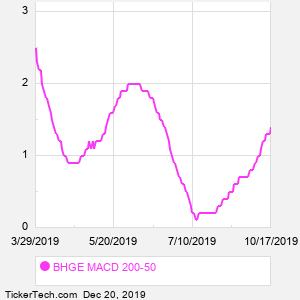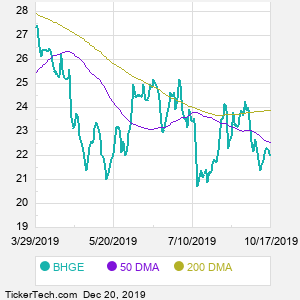Baker Hughes, A GE is a provider of oilfield products, services and digital solutions. Co. operates four segments: Oilfield Services, which provides products and services for on and offshore operations; Oilfield Equipment, which provides a portfolio of products and services required to facilitate the flow of hydrocarbons from the subsea wellhead to the surface production facilities; Turbomachinery & Processing Solutions, which provides equipment and related services for mechanical-drive; and Digital Solutions, which provides operating technologies helping to improve the health, productivity and safety of asset intensive industries and enable the Industrial Internet of Things.
When researching a stock like Baker Hughes A GE Class A, many investors are the most familiar with Fundamental Analysis — looking at a company's balance sheet, earnings, revenues, and what's happening in that company's underlying business. Investors who use Fundamental Analysis to identify good stocks to buy or sell can also benefit from BHGE Technical Analysis to help find a good entry or exit point. Technical Analysis is blind to the fundamentals and looks only at the trading data for BHGE stock — the real life supply and demand for the stock over time — and examines that data in different ways. One of those ways is to calculate a Simpe Moving Average ("SMA") by looking back a certain number of days. One of the most popular "longer look-backs" is the BHGE 200 day moving average ("BHGE 200 DMA"), while one of the most popular "shorter look-backs" is the BHGE 50 day moving average ("BHGE 50 DMA"). A chart showing both of these popular moving averages is shown on this page for Baker Hughes A GE Class A. Comparing two moving averages against each other can be a useful visualization tool: by calculating the difference between the BHGE 200 DMA and the BHGE 50 DMA, we get a moving average convergence divergence indicator ("BHGE MACD"). The BHGE MACD chart, in conjunction with the chart of the moving averages, basically helps in visualizing how the moving averages are showing convergence (moving closer together), or divergence (moving farther apart). |



